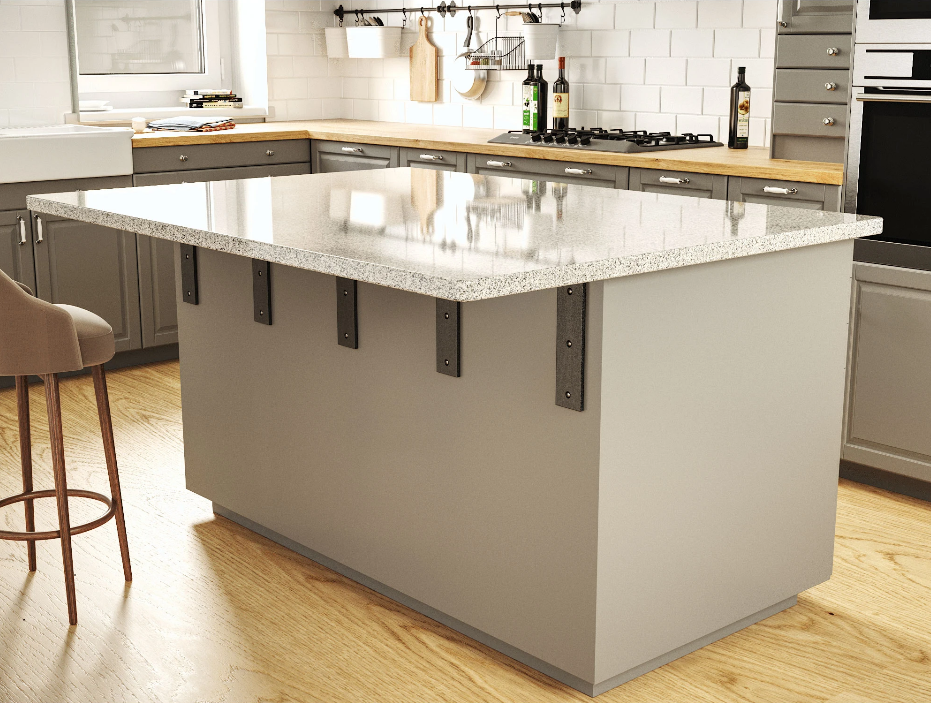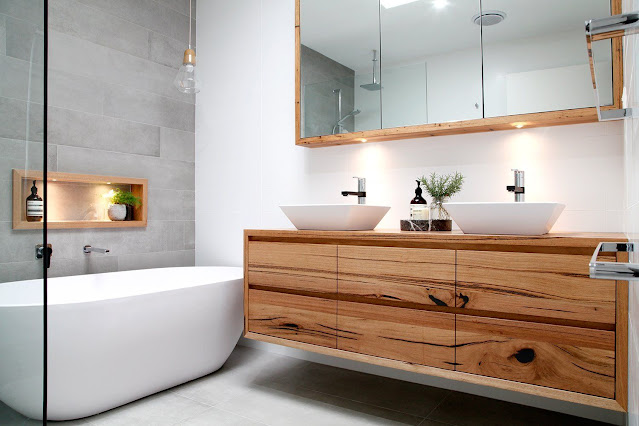The Right Countertop Support
Underneath cabinets offer their undying support to countertops. However, when countertop overhangs are installed, mesh and plywood fail to provide ample support. High quality countertop support brackets are required. Here’s more about it.
PVC films and laminates are popularly in vogue. However, nothing can beat the elegance and opulence offered by natural stone, more so in the kitchen and bathroom. Natural stone is known for its grandeur and appeal. However, as it is significantly expensive compared to its counterparts, owners make sure it is durable and last for a long time. Thanks to their weight and brittleness, they are prone to cracks or a fall from the top of the cabinet.
So, natural stone countertops, unlike laminate require careful understanding of why and how they will be used. For; the support required is based on the use. High quality countertop support brackets may be required to make them stand tall without the risk of a crack, breakage, trip or fall.
Supporting Granite Countertops
So, here are some tips to provide the right support to the fragile and delicate granite countertops.
Granite countertops that are installed exactly on the cabinets below attain support from beneath. However, stone is often overhung on the countertop for additional appeal and enhanced functionality. For instance: The extension of the kitchen island that is overhung for added appeal and additional space to work or enjoy a meal. The cantilevered bar countertop, a desk overhung for leg space and more are commonplace. As granite, marble and limestone overhangs weigh hundreds of pounds, using countertop support brackets to hold them in place is imperative.
Varying Support Requirements
Here’s more about the varying support requirements for different uses of granite countertops.
Typically, the fabricator installs a mesh on the underside of the granite slab for additional support, which prevents the stone from failure. Well, this is applicable for thick granite slabs that are 3 cm thick. For slabs that are 2 cm or less in thickness, a plywood support is provided on the underside. This plywood is cut to the size of the countertop layout and fixed to the cabinets before the stone top is installed. The stone is installed with a front edge to conceal the plywood underneath.
Mesh and plywood provide sufficient support to save the granite from falling off or cracking. However, when the countertop is cantilevered on one or more sides, like in a bar overhang, it creates an unbalanced position. Odds are high that the cantilevered side may crack or get damaged when weight is exerted on it. The cantilevered side is therefore, supported with countertop support brackets, which are either hidden or seen. This is why it is essential to discuss the cabinet layout with the trim carpenter, so as to plan appropriate countertop support. Ideally, the overhang must not be more than one-third of the width of the countertop. Many designs require the width to be more than this. In such case, mesh, plywood and cabinet support do not suffice. High quality countertop brackets are imperative. Brackets that provide ample support are now widely available, thus, eliminating design restrictions including cantilevers and overhangs.
So, whether an owner intends to overhang a desk with leg space, a bar countertop with a wide cantilever etc, brackets offer their shoulders for support.
Stone can thus, be used to create a well designed and appealing space.





Comments
Post a Comment